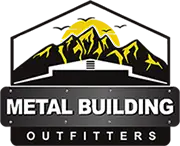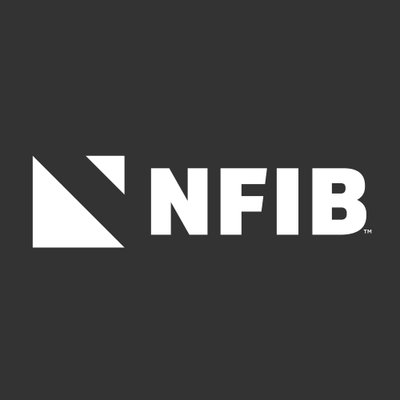
Contents
When it comes to creating lasting structures, custom metal buildings offer unparalleled durability and versatility. From the choice of materials to the design considerations, every aspect plays a crucial role in ensuring the longevity of your building.
Understanding the key factors that impact the durability of custom metal buildings can save you both time and money in the long run. Let’s explore the essential elements that contribute to the resilience of these structures and how you can make informed decisions for your next project.
Key Takeaways
- Custom metal buildings offer unparalleled durability and customizable design options.
- Corrosion resistance is crucial for long-term durability, with galvanized steel and stainless steel being excellent choices.
- Material selection (steel or aluminum) and maintenance routines are essential factors impacting the durability of custom metal buildings.
- Design considerations for strength include prioritizing robust structural elements, high-quality materials, and foundation designs that support weight and load requirements.
Benefits of Custom Metal Buildings
Custom metal buildings offer unparalleled durability and customizable design options for a wide range of applications. When considering customization benefits, these structures provide tailored solutions to meet your specific needs. Whether you require additional storage space, a workshop for your hobbies, or a commercial building for your business, custom metal buildings can be designed to fit your requirements perfectly.
One of the key advantages of custom metal buildings is their long-lasting solutions. Unlike traditional construction methods, metal buildings are engineered to withstand harsh weather conditions, ensuring that your investment remains secure and protected for years to come. By choosing a custom metal building, you’re opting for a durable structure that will require minimal maintenance over its lifespan.
Furthermore, the ability to customize your metal building allows you to create a space that reflects your unique style and preferences. From choosing the color of the exterior panels to selecting the layout of the interior space, custom metal buildings offer a level of personalization that’s unmatched by other construction options. This customization not only enhances the functionality of the building but also adds a sense of belonging, as you have created a space that truly represents you.
Types of Metal Building Materials
When considering metal building materials, it’s essential to weigh the differences between steel and aluminum. Understanding the corrosion resistance of each material is crucial for long-term durability.
Additionally, exploring the various coating options available can significantly impact the appearance and longevity of your custom metal building.
Steel Vs. Aluminum
In metal building construction, the choice between steel and aluminum as building materials plays a crucial role in determining the structure’s durability and longevity. Steel is renowned for its exceptional durability, offering robustness and resilience against harsh environmental conditions. Its strength allows for greater load-bearing capacity, making it ideal for structures requiring significant support.
On the other hand, aluminum boasts impressive strength-to-weight ratio, making it lighter and easier to handle during construction. While steel excels in terms of durability, aluminum’s strength properties are advantageous in situations where weight is a concern. Understanding the specific requirements of your project will help you decide whether steel durability or aluminum strength better suits your custom metal building needs.
Corrosion Resistance
For optimal corrosion resistance in metal building materials, selecting the right type of metal is critical to ensuring the longevity and durability of the structure. When considering rust prevention and surface treatment, two key factors play a significant role in enhancing the weather resistance and overall lifespan of the building:
- Steel:
- Galvanized steel offers excellent rust prevention due to its zinc coating.
- Stainless steel is highly durable and provides exceptional longevity against corrosion.
Coating Options
To ensure optimal corrosion resistance in metal building materials, understanding the various coating options available is essential for enhancing the longevity and durability of the structure. Coating thickness plays a crucial role in protecting the metal from environmental elements. Thicker coatings generally provide better protection against corrosion.
When considering coating options, color choices aren’t just aesthetic; they can also impact the building’s heat absorption and energy efficiency. Application methods vary from spray-on to dip coating, each affecting the coating’s uniformity and durability. Longevity benefits are significant with proper coating selection and application.
Factors Impacting Durability
When considering the durability of custom metal buildings, two critical factors stand out: material selection and maintenance strategies.
Your choice of materials, such as steel or aluminum, plays a significant role in the building’s longevity and resistance to environmental elements.
Implementing effective maintenance routines, including regular inspections and repairs, is essential for preserving the structural integrity of your metal building over time.
Material Selection
Choosing the right materials for your custom metal building is crucial in ensuring its long-term durability and structural integrity. When selecting materials, consider the following:
- Material Compatibility:
- Ensure that all materials used are compatible with each other to prevent corrosion or weakening over time.
- Check the manufacturer’s guidelines to confirm which materials work best together.
- Longevity Factors:
- Evaluate the expected lifespan of each material to determine the overall durability of your building.
- Consider factors like weather resistance and maintenance requirements to maximize the longevity of your custom metal building.
Maintenance Strategies
Considering the materials you’ve selected for your custom metal building, implementing effective maintenance strategies is essential to safeguard its durability and structural integrity over time.
Rust prevention is paramount in maintaining the longevity of your structure. Regular inspections to identify any signs of rust or corrosion early on can prevent extensive damage. Implementing a routine cleaning schedule to remove dirt and debris will also help in preventing rust formation.
Additionally, ensuring proper paint protection by repainting when necessary can act as a barrier against moisture and oxidation, further reducing the risk of rust.
Design Considerations for Strength
To ensure the strength and durability of your custom metal building, prioritize incorporating robust structural elements early in the design phase. When considering strength considerations and structural integrity, keep the following points in mind:
- Material Selection
- Opt for high-quality steel or metal alloys with proven strength properties.
- Ensure the chosen materials are suitable for the specific environmental conditions the building will face.
- Foundation Design
- Design a foundation that can adequately support the weight and load requirements of the metal building.
- Consider factors such as soil composition and local climate when designing the foundation to enhance structural integrity.
Maintenance Tips for Longevity
To maintain the strength and durability of your custom metal building over time, implementing regular maintenance practices is crucial. By following preventative measures and establishing inspection routines, you can ensure the longevity of your structure.
Preventative measures play a vital role in maintaining the integrity of your custom metal building. Start by regularly checking for signs of corrosion, rust, or any other forms of deterioration. Addressing these issues promptly can prevent them from escalating and causing more significant damage to the building. Additionally, applying protective coatings or sealants to vulnerable areas can help prevent corrosion and extend the lifespan of the metal components.
Establishing inspection routines is key to identifying potential maintenance needs early on. Conducting regular inspections of the roof, walls, foundation, and any other critical components can help you catch issues before they become serious problems. Look for signs of leaks, cracks, or structural damage during these inspections and address them promptly to prevent further deterioration.
Incorporating these preventative measures and inspection routines into your maintenance plan can significantly increase the longevity of your custom metal building. By staying proactive and addressing maintenance needs promptly, you can ensure that your building remains strong and durable for years to come.
Insulation Options for Climate Control
For effective climate control in your custom metal building, selecting the right insulation option is crucial. When considering insulation types for your building, it’s essential to prioritize energy efficiency to maintain a comfortable environment while optimizing energy usage.
Here are some key insulation options to help you achieve your climate control goals:
- Fiberglass Insulation:
- Description: Made from tiny glass fibers, it’s cost-effective and provides good thermal performance.
- Benefits: Helps regulate temperature, reduces energy costs, and is relatively easy to install.
- Spray Foam Insulation:
- Description: Applied as a liquid that expands into foam, creating a tight thermal seal.
- Benefits: Offers high energy efficiency, minimizes air leakage, and provides excellent moisture resistance.
Foundation Requirements for Stability
Wondering what foundational requirements ensure the stability of your custom metal building? When it comes to ensuring the stability of your structure, the soil conditions and anchoring methods play a crucial role. Understanding these factors can help you make informed decisions that will support the longevity and durability of your custom metal building.
Soil Conditions and Stability
Before constructing your custom metal building, it is essential to assess the soil conditions of your building site. Different soil types have varying load-bearing capacities, which can impact the stability of your structure. Conducting a soil test will provide valuable information on the soil composition, drainage capabilities, and potential for settling. Building on stable soil foundations will help prevent structural issues in the future.
Anchoring Methods and Support
Choosing the appropriate anchoring methods is vital for securing your custom metal building to the foundation. Anchors help transfer the loads from the building to the foundation, providing stability and resistance against external forces. Common anchoring methods include concrete anchors, helical anchors, and mobile home anchors. Selecting the right anchoring method based on your building design and soil conditions will ensure the structural integrity of your custom metal building.
| Soil Conditions | Stability |
|---|---|
| Stable Soil Types | High Load-bearing Capacity |
| Proper Drainage | Reduced Risk of Settling |
| Soil Testing | Informed Foundation Decisions |
Cost-Effective Durability Solutions
Assessing the soil conditions and selecting appropriate anchoring methods are crucial steps in ensuring the stability and longevity of your custom metal building. Now let’s explore cost-effective durability solutions.
- Long-Term Cost Savings
Efficient construction techniques play a pivotal role in reducing long-term costs associated with maintenance and repairs. Opting for prefabricated metal building components can expedite the construction process, saving both time and money in the long run.
- Eco-Friendly Design Customization
Incorporating eco-friendly materials and design elements not only benefits the environment but also enhances the durability of your metal building. Utilizing sustainable practices like rainwater harvesting systems or solar panel integration can contribute to cost savings over time while reducing the building’s ecological footprint.
Recap
Custom metal buildings offer unparalleled durability and strength for various applications. By choosing the right materials, considering design factors, and implementing proper maintenance strategies, you can ensure the longevity of your structure.
Insulation options and foundation requirements are key considerations for climate control and stability. With cost-effective solutions available, custom metal buildings provide a reliable and long-lasting solution for your building needs.
Recent Posts
Explore Benefits of Residential Metal Structures
It’s funny how you might stumble upon the idea of residential metal structures just when
5 Best Durable Metal Garages for Longevity
Imagine your garage as the backbone of your property, supporting everything from tools to vehicles,
3 Tips for Durable Metal Garages
Is it true that the longevity of your metal garages hinges on just a few




